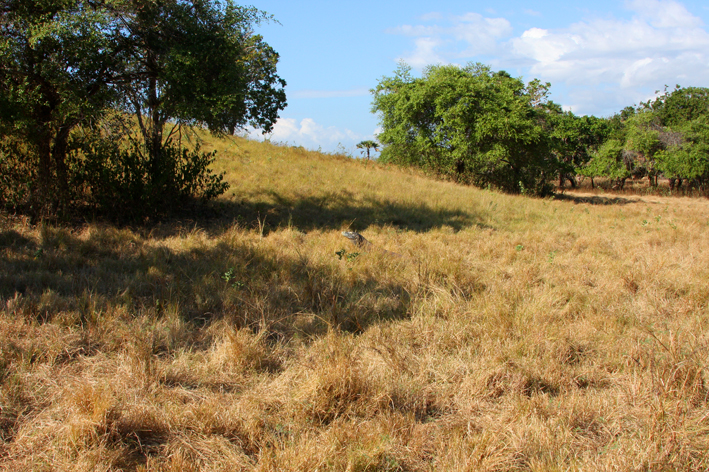Quote:
Originally Posted by monitorlizard

|
There isn't any article in that issue of Biawak mentioning
salvator living in groups?
Unless you're referring to the photograph? The caption offers a hint:
"Varanus salvator. Salang Village, Tioman Island, Malaysia."
Be very careful about making assumptions on the basis of photographs.
When you see a photo taken in a village, with several monitors in the shallows looking in the same direction, my money is that, out of frame, there's a fisherman with scraps who has been feeding them on a regular basis.
Many large monitors can be found in concentrations near man-made artificial food sources, such as garbage tips, parks, picnic areas, villages... you name it. They will also gather around carrion. However, this doesn't classify them as living in groups or colonies, for they are there for the food, not each other.
Varanus salvator isn't by nature a colony or group animal.
A solitary
Varanus salvator near Singapore. Although I've got very limited experience with this species in the wild, the ones I saw were either concentrated near human habitation or solitary when out in the forest/mangroves, away from humans.

Quote:
Originally Posted by monitorlizard

The same might apply to Komodo Dragons, though it appears they are seen only in groups during breeding and feeding.
|
Komodo dragons are solitary. They'll gather around carrion. Photographs you see of them lying around in groups are invariably taken near the ranger stations on Rinca and Komodo islands, where the rangers throw out their food scraps (and the buildings offer shade from the heat).
Solitary dragon out on the savannah.

Dragon feeding on scraps next to the rangers' kitchen on Komodo.

Young dragon moving around near the ranger station on Rinca. The animal's posture indicates the unease with which it hangs around other dragons - its arched neck and puffed throat and abdomen are a sign of threat. Almost all of the smaller dragons did this every time they got up to move.

Big male dragon doing the same, on Komodo island. There was another big male nearby and, although they occasional were lying near each other nonplussed, they spent a lot of time hissing and almost scrapping with each other.

\
Quote:
Originally Posted by monitorlizard

|
The article on two ackies mating in the wild? Mating isn't a sign of living in colonies or groups, either. All monitors must mate, so males and females will get together for that.
However, to keep it on topic, this is one of those areas where it's best not to emulate the wild, for if one wants to breed monitors in captivity it's best to keep them together in pairs. The reasoning behind this is as follows: In the wild, males and females will pair up for a short period each year. That pairing starts when the female is reproductively receptive and they approach each other carefully. The good thing about the wild is that if things don't work out, there's unlimited space in which they can run away.
In captivity, putting two animals together in an enclosure of limited size has its dangers. If they don't get along, there's no room to get away and that's when bad injuries (or even deaths) occur. Consequently, you don't want to be guessing when the female is going to be receptive and constantly reintroducing the pair over and over again. If they get along, then leave them together and it takes away the dangers of reintroduction.
There are 'some' people (no names mentioned) who have made the assumption that since captive monitors seem to get along so well, they must be social animals in the wild. This is not the case. I've seen thousands of monitors in the wild of at least a dozen different species. They've all been solitary, with the exceptions of Komodo dragons around ranger stations, water monitors around human food sources and lace monitors around picnic grounds. In those instances, for all three of those species the interactions between the individuals was anything but social and was almost always antagonistic.



